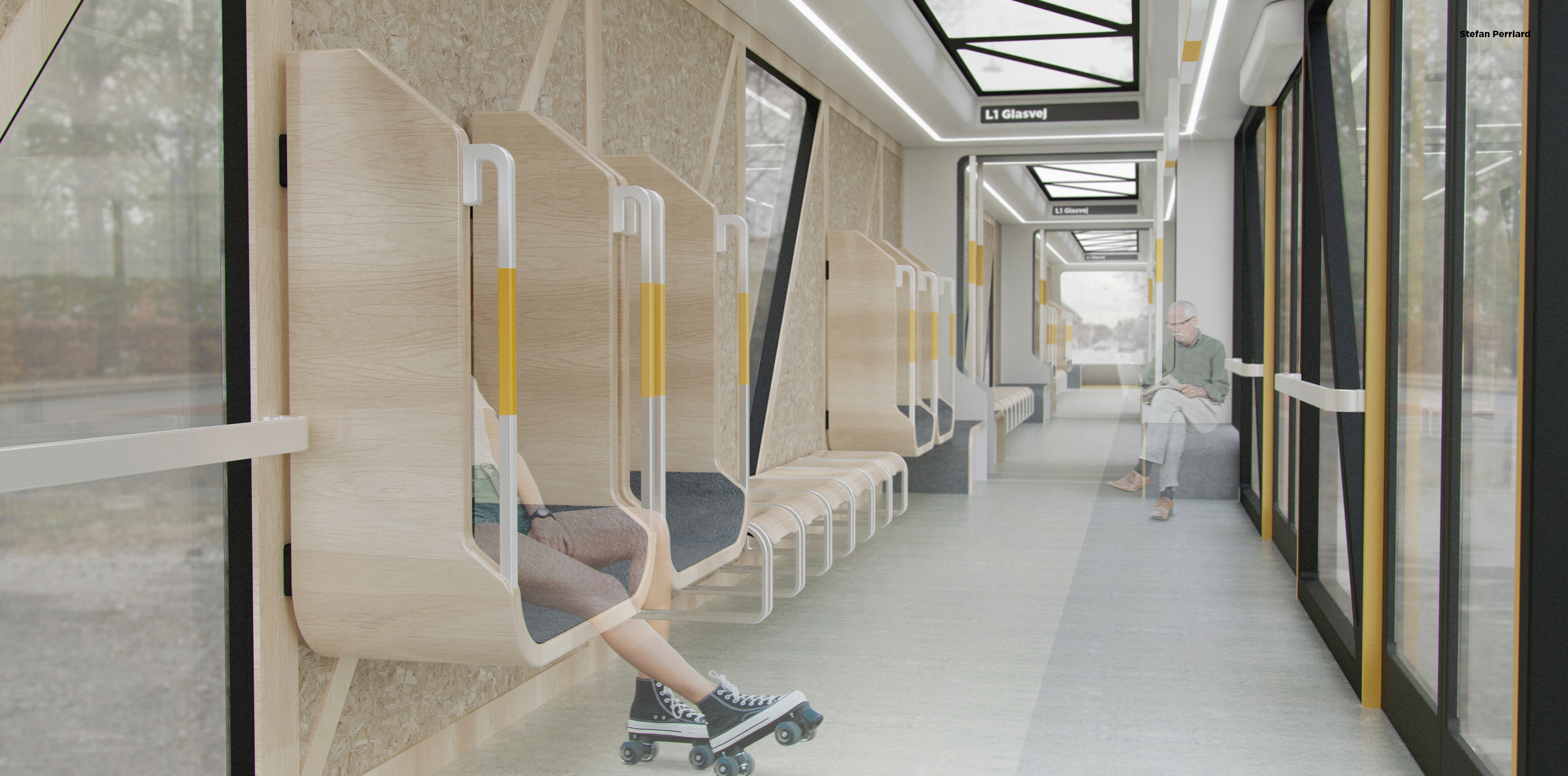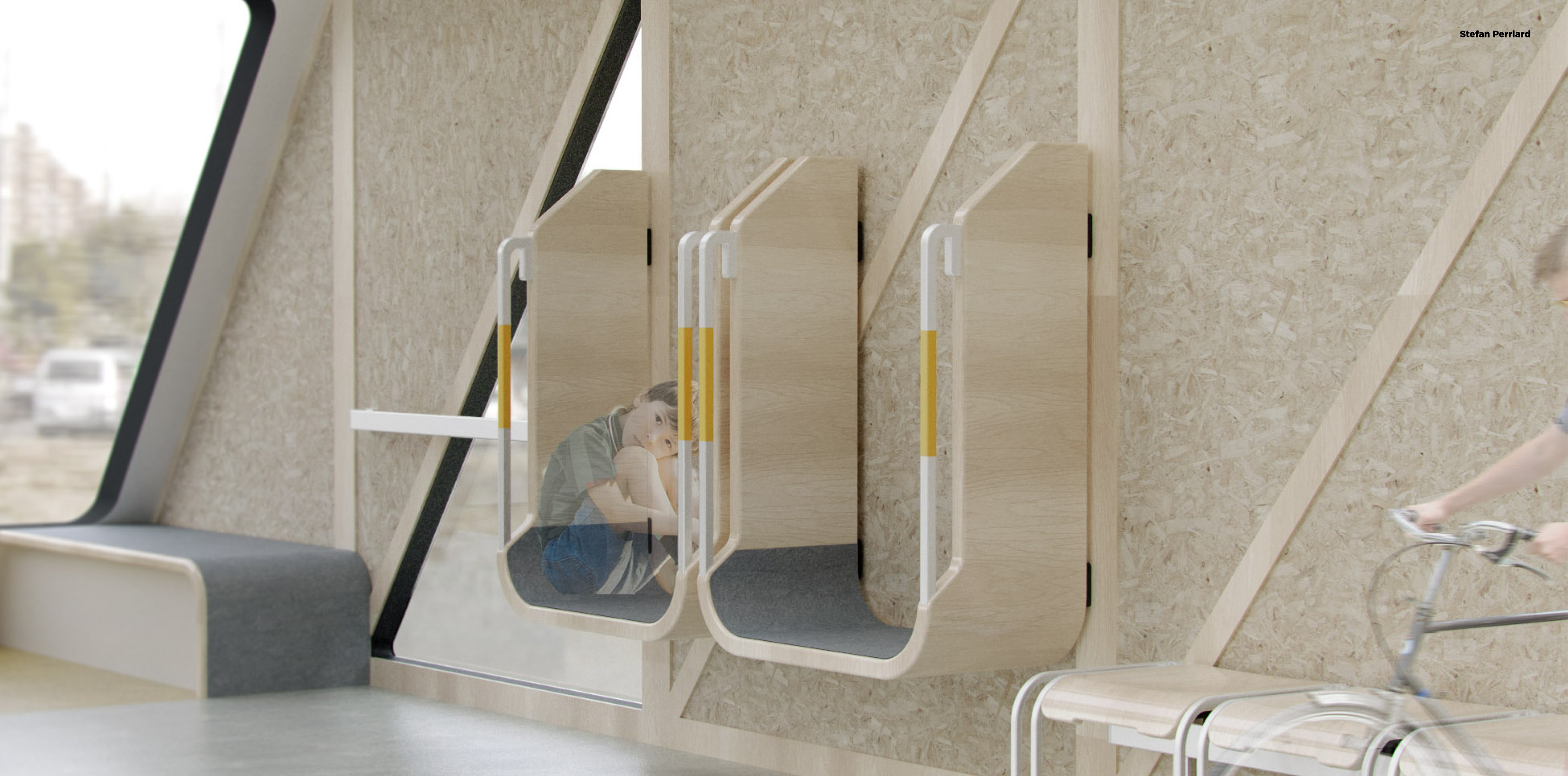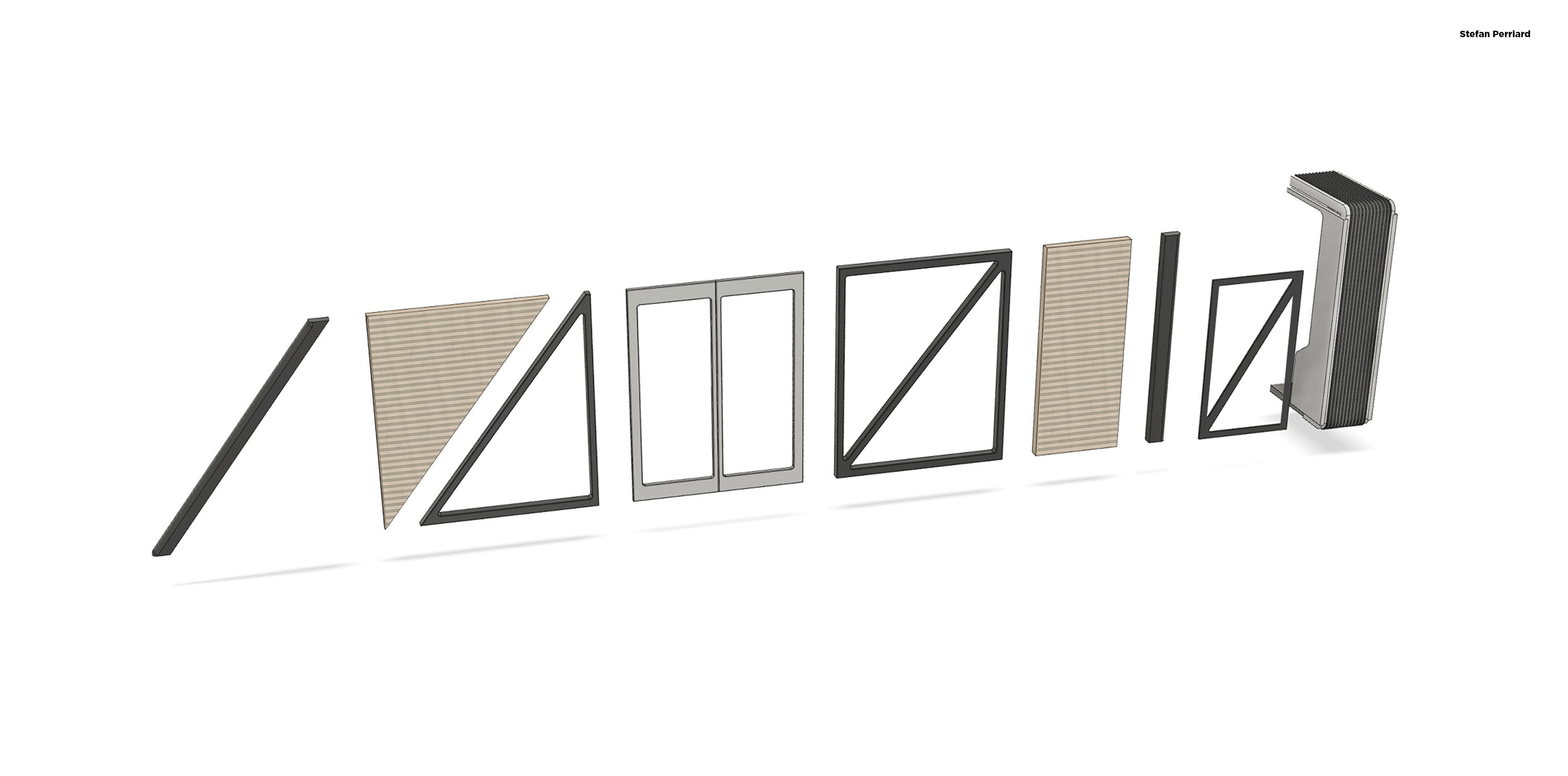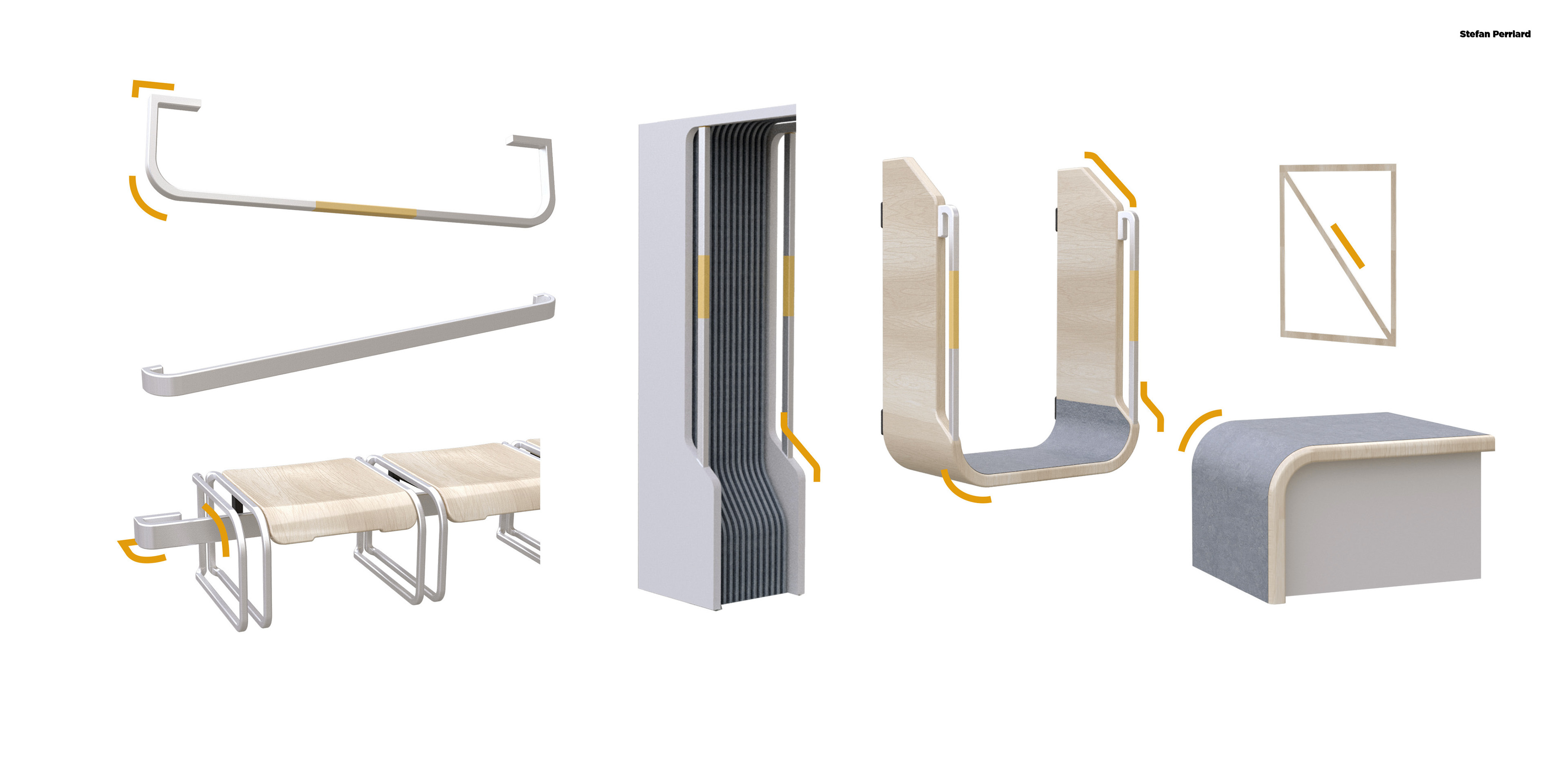Copenhagen Light Rail.
An integrated part of the city
Copenhagen Light Rail is a vision for how the light rail plans for Copenhagen could take shape in 2035. The project shows how the rail can be integrated into car-free streets, enhance the aesthetic qualities of local areas, and make the interior feel inclusive for all travelers.
The design consists of a train and a train-car. The individual train-cars can be turned into healthcare clinics or pop-up shops, traveling between the districts.
The train is designed in a modular system with a local manufacturing style and aesthetic.
The train is designed in a modular system with a local manufacturing style and aesthetic.
Copenhagen Light Rail seeks to deliver a "yes in my backyard"-experience by being community-driven, tailored to the local spirit, and developing new public spaces.
Each carriage can transform into pop-up rooms, parked as part of the train stations. This makes Copenhagen Light Rail a new type of social infrastructure that can circulate experiences and goods from each district, making the outskirts more accessible.
The interior offers seats for single or shared use. A collective bench of flip-up seats makes the entire train a flex area for bicycles, groups, and wheelchair users.
Wide doors on one side make it easy to hop on/off, maximizes standing area, and remove doubt about the direction the train is heading.
The train is designed in a modular way with a local urban look. It allows the carriages to be produced locally, without costly tooling, and in the small quantities needed while delivering a landmark for the outskirts. A way out of "off-the-shelf products" that are being copy-pasted into every major city.




A new light rail is in favor to be build in Copenhagen. But the citizens are protesting because who wants a railway in their backyard?
If the rail is chosen, the streets would need to be rebuilt during construction, so why not reimagine the streets and rail as one? And delivering stations as public spaces for these new social activities.
If the rail is chosen, the streets would need to be rebuilt during construction, so why not reimagine the streets and rail as one? And delivering stations as public spaces for these new social activities.
Today, this roadway the light rail will replace is congested by bicycles and buses.
A light rail traveling at 30 km/h will give the capacity needed. By integrating the train at strategic places it can support their communities. The train will have a route that connects libraries, supermarkets, and hospitals. It is an opportunity to mobilize these static functions across the rail network. Therefore, the rail must fit the raw, working-class, and vibrant local culture.